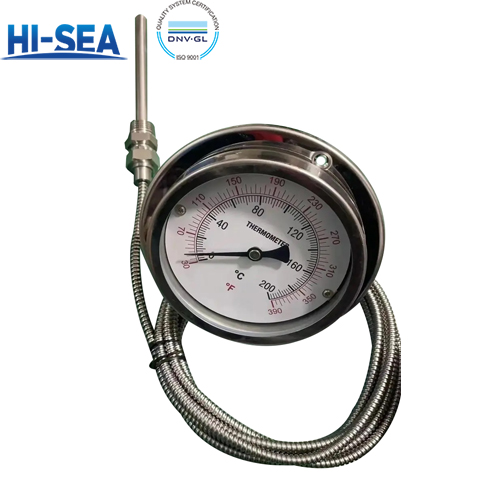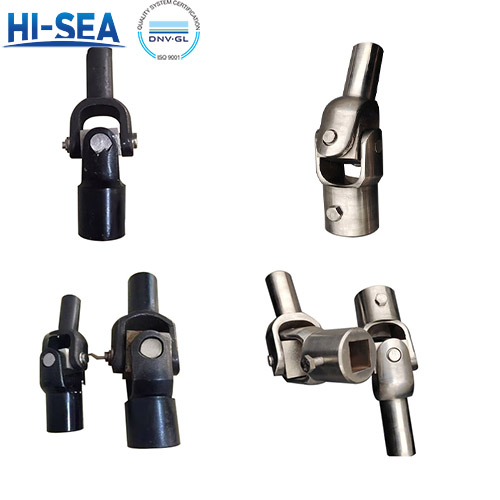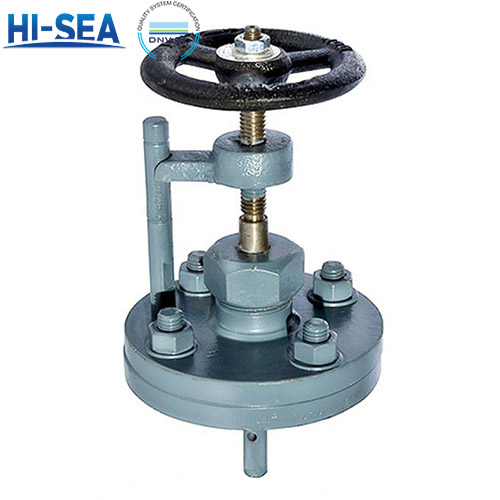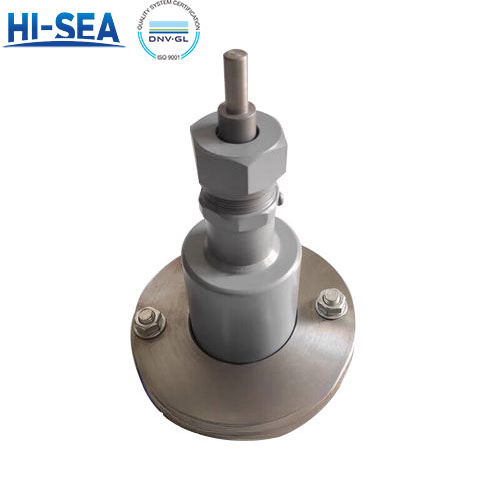
Marine Pressure type Thermometer
A marine pressure-type thermometer is a mechanical device used to measure the temperature of a boat's engine, gearbox, or generator. It is the most common type of temperature gauge found on older and many modern boats.
Overview
How It Works (The Basic Principle)
The system operates on a simple principle: the expansion and contraction of a fluid.
1. The Bulb (Sensor): This is the business end of the system. It's a metal probe that is installed directly into the engine's water jacket (for coolant temperature) or an oil gallery. Inside the bulb is a fluid reservoir.
2. The Capillary Tube: A thin, flexible, metal tube connects the bulb to the gauge on the instrument panel. This tube is filled with the same fluid.
3. The Bourdon Tube (in the Gauge): Inside the gauge itself is a coiled, hollow tube called a Bourdon tube. The capillary tube connects to this.
4. The Process:
◦ As the engine heats up, the temperature at the bulb increases.
◦ The fluid inside the bulb expands.
◦ This expansion creates pressure which travels along the fluid-filled capillary tube.
◦ The pressure enters the Bourdon tube in the gauge, causing it to uncoil slightly.
◦ The movement of the Bourdon tube is connected through a linkage to the needle on the gauge's face, causing it to move and indicate the temperature.





